
The Enigmatic Beauty of Death Valley National Park
Discover the extreme and captivating landscapes of Death Valley National Park, California's jewel of the desert, known for its unique geology and rich history.
Death Valley National Park is a sprawling expanse of otherworldly landscapes and extreme conditions. Located in California, this park is known for its scorching temperatures, making it one of the hottest places on Earth. But beyond its heat, Death Valley offers a unique array of natural wonders that captivate visitors from all over the globe. The park's diverse terrain includes vast salt flats, towering sand dunes, colorful badlands, and rugged mountains. One of the most striking features is Badwater Basin, the lowest point in North America, sitting at 282 feet below sea level. The stark white salt flats contrast beautifully with the surrounding desert and mountains, creating a surreal and mesmerizing view. Beyond the geological marvels, Death Valley is also rich in history. The remnants of old mines and ghost towns tell tales of the area's past and the people who once sought fortune here. The park is also a designated International Dark Sky Park, offering some of the best stargazing opportunities in the country. Clear nights reveal a sky filled with countless stars, providing a breathtaking experience for nighttime visitors.
Local tips in Death Valley National Park
- Visit in the cooler months (October to April) to avoid the extreme summer heat.
- Bring plenty of water and stay hydrated; dehydration can occur quickly in the dry climate.
- Don't miss the sunrise at Zabriskie Point for stunning views of the badlands.
- Check the weather and road conditions before your trip, as flash floods can occur.
- Carry a map as GPS signals can be unreliable in some parts of the park.
- Take advantage of the park's dark skies for a memorable stargazing experience.
The Enigmatic Beauty of Death Valley National Park
Death Valley National Park is a sprawling expanse of otherworldly landscapes and extreme conditions. Located in California, this park is known for its scorching temperatures, making it one of the hottest places on Earth. But beyond its heat, Death Valley offers a unique array of natural wonders that captivate visitors from all over the globe. The park's diverse terrain includes vast salt flats, towering sand dunes, colorful badlands, and rugged mountains. One of the most striking features is Badwater Basin, the lowest point in North America, sitting at 282 feet below sea level. The stark white salt flats contrast beautifully with the surrounding desert and mountains, creating a surreal and mesmerizing view. Beyond the geological marvels, Death Valley is also rich in history. The remnants of old mines and ghost towns tell tales of the area's past and the people who once sought fortune here. The park is also a designated International Dark Sky Park, offering some of the best stargazing opportunities in the country. Clear nights reveal a sky filled with countless stars, providing a breathtaking experience for nighttime visitors.
When is the best time to go to Death Valley National Park?
Iconic landmarks you can’t miss
Furnace Creek Visitor Center
Discover the Furnace Creek Visitor Center in Death Valley, your essential guide to the wonders of this spectacular desert landscape.

Dante’s View
Experience the breathtaking beauty of Death Valley from Dante's View, a stunning overlook that captures the vastness of the desert landscape.

Mesquite Flat Sand Dunes
Explore the stunning Mesquite Flat Sand Dunes in Death Valley National Park, where golden sands and breathtaking views await every adventurer.
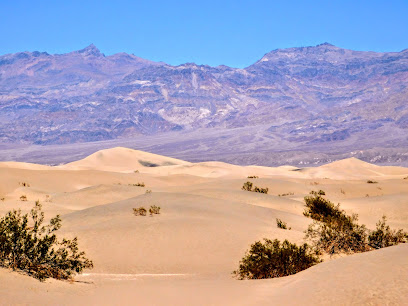
The Ranch at Death Valley
Discover the ultimate desert retreat at The Ranch at Death Valley, where comfort meets the breathtaking beauty of one of America's most iconic national parks.

Harmony Borax Works
Discover the rich history of the borax industry at Harmony Borax Works, a captivating historical site in Death Valley, California.

Stovepipe Wells Village Hotel
Experience the rugged beauty of Death Valley from the comfort of Stovepipe Wells Village Hotel, your perfect desert retreat.

Amargosa Opera House
Discover the enchanting Amargosa Opera House, a historic jewel in Death Valley offering a unique blend of art, culture, and hospitality.

Golden Canyon Trailhead
Discover the breathtaking beauty of Golden Canyon Trailhead in Death Valley National Park, a hiker's paradise with stunning geological formations and vibrant landscapes.

Stovepipe Wells General Store
Discover the charm of Stovepipe Wells General Store in Death Valley - a perfect stop for snacks, souvenirs, and essential supplies amid breathtaking desert landscapes.

Ubehebe Crater
Discover Ubehebe Crater, a breathtaking volcanic wonder in Death Valley National Park, showcasing stunning landscapes and rich geological history.

Death Valley National Park Information Area
Discover the breathtaking beauty and extreme landscapes of Death Valley National Park, a natural wonder in California's desert region.

Natural Bridge Trail
Discover the stunning landscapes and unique geological features of Natural Bridge Trail, a premier hiking destination in California's natural beauty.

Last Kind Words Saloon
Experience the unique flavors of Death Valley at Last Kind Words Saloon, a steakhouse oasis offering delicious dishes and stunning desert views.

Wildrose Charcoal Kilns
Explore the Wildrose Charcoal Kilns, a fascinating historical site in Death Valley, showcasing the unique mining heritage of California's desert landscape.
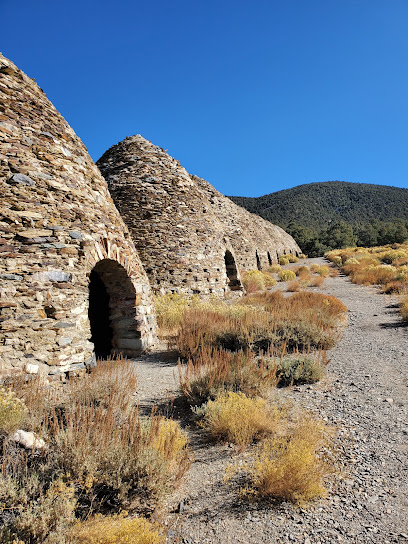
Death Valley National Park Sign
Experience the breathtaking landscapes and unique geological formations of Death Valley National Park, a true marvel of nature's extremes.

Unmissable attractions to see
Furnace Creek Visitor Center
Explore the enchanting landscapes of Death Valley at Furnace Creek Visitor Center, your ultimate guide to this unique desert oasis.
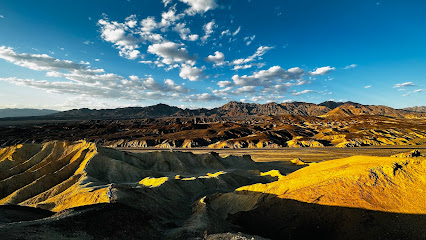
Dante’s View
Experience unparalleled panoramic views at Dante's View in Death Valley National Park, a scenic spot that captures the essence of desert beauty.

Mesquite Flat Sand Dunes
Discover the breathtaking Mesquite Flat Sand Dunes in Death Valley, where stunning landscapes and adventure await every visitor.

Father Crowley Overlook
Experience the breathtaking vistas and serene beauty at Father Crowley Overlook in Death Valley National Park, a must-visit scenic spot for every traveler.

Harmony Borax Works
Explore the historic Harmony Borax Works Interpretive Trail in Death Valley, where mining history meets breathtaking desert landscapes.

Harmony Borax Works
Explore the rich history of borax mining at Harmony Borax Works in Death Valley, surrounded by breathtaking desert landscapes and intriguing stories.

Devil's Golf Course
Discover the otherworldly salt formations at Devil's Golf Course in Death Valley National Park, a unique natural beauty waiting to be explored.
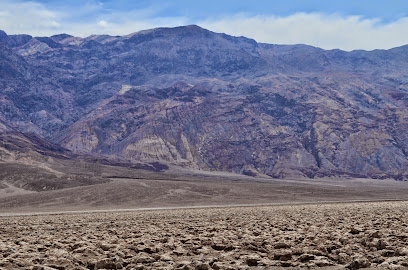
Amargosa Opera House
Discover the cultural oasis of the Amargosa Opera House, blending art, history, and stunning desert landscapes in Death Valley.

Badwater Basin
Discover the breathtaking beauty of Badwater Basin, the lowest point in North America, and experience its unique salt flats and stunning landscapes.
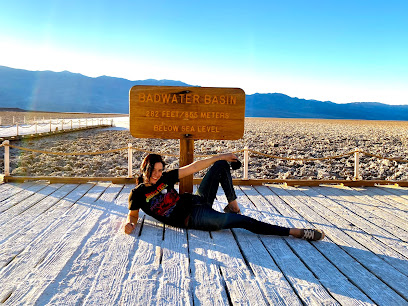
Ash Meadows National Wildlife Refuge
Explore the diverse ecosystems and rare wildlife at Ash Meadows National Wildlife Refuge, a hidden gem in Nevada's natural landscape.

Golden Canyon Trailhead
Discover the breathtaking beauty of Golden Canyon Trailhead, a premier hiking destination in Death Valley National Park with stunning vistas and unique geological formations.

Stovepipe Wells General Store
Experience the essential Stovepipe Wells General Store in Death Valley, where convenience meets adventure in a breathtaking desert landscape.

Dante's View
Experience the stunning panoramas and serene beauty of Dante's View, a must-visit peak in Death Valley National Park.

Furnace Creek Campground
Experience the breathtaking beauty of Furnace Creek Campground in Death Valley, an oasis for campers and adventurers alike amid stunning desert landscapes.

Ubehebe Crater
Explore Ubehebe Crater, a stunning volcanic wonder in Death Valley National Park, showcasing breathtaking views and unique outdoor adventures.

Essential places to dine
Last Kind Words Saloon
Experience mouthwatering steaks and rustic charm at Last Kind Words Saloon in Death Valley National Park.

Steaks and Beer
Discover mouthwatering steaks and refreshing beers at Steaks and Beer in Tecopa—a hidden gem perfect for meat lovers visiting California's serene desert.

Toll Road Restaurant
Discover culinary delights at Toll Road Restaurant, where delicious food meets stunning views in Death Valley National Park.

Badwater Saloon
Discover Badwater Saloon in Death Valley - your perfect stop for refreshing drinks and relaxation amidst stunning desert landscapes.

Amargosa Café
Discover Amargosa Café: A cozy retreat serving delicious meals and coffee amidst the stunning beauty of Death Valley.

Stovepipe Wells Village Saloon
Experience authentic desert charm at Stovepipe Wells Village Saloon in Death Valley National Park - where adventure meets relaxation.

The Ranch 1849 Restaurant
Discover The Ranch 1849 Restaurant: A Buffet Delight in the Heart of Death Valley National Park.

Ice Cream Parlor, Ranch at Death Valley
Experience refreshing ice cream delights in the heart of Death Valley's stunning landscapes—perfect for cooling off after your desert adventures.
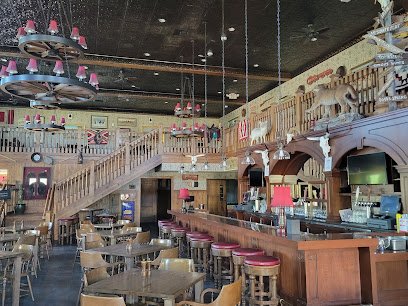
The Inn at Death Valley Dining Room
Experience exquisite dining amidst stunning desert vistas at The Inn at Death Valley Dining Room, where every meal is a journey into flavor.

Wild Rose Tavern
Experience authentic American dining at Wild Rose Tavern in Death Valley—a perfect blend of comfort food and stunning desert views.

Markets, malls and hidden boutiques
Zabriskie Point
Discover Zabriskie Point: A Stunning Vista Point in Death Valley National Park, Perfect for Sunrise, Sunset, and Hiking Adventures.

Furnace Creek Visitor Center
Explore Death Valley National Park from the Furnace Creek Visitor Center, your essential stop for information, exhibits, and breathtaking views.

The Inn at Death Valley
Experience unparalleled luxury and natural beauty at The Inn at Death Valley, your oasis in the heart of California's stunning desert landscape.
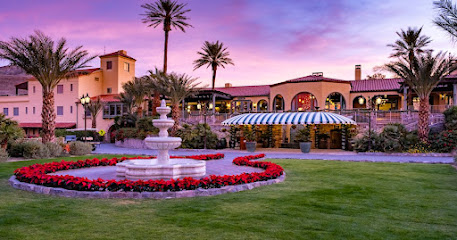
The Ranch at Death Valley
Discover The Ranch at Death Valley, a restful haven amidst stunning desert landscapes, perfect for adventurers and nature lovers.

Harmony Borax Works
Explore the historic Harmony Borax Works in Death Valley, a captivating site showcasing the legacy of borax mining amidst stunning desert landscapes.

Stovepipe Wells Village Hotel
Discover comfort and adventure at Stovepipe Wells Village Hotel, your gateway to the stunning landscapes of Death Valley National Park.
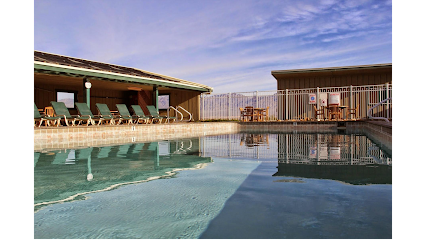
Stovepipe Wells General Store
Discover the essentials and unique souvenirs at Stovepipe Wells General Store, your perfect stop in Death Valley National Park.

Last Kind Words Saloon
Discover hearty steaks and local flavors at Last Kind Words Saloon, a charming culinary stop in Death Valley National Park, perfect for weary travelers.

Wildrose Charcoal Kilns
Discover the Wildrose Charcoal Kilns in Death Valley, California, an iconic historical landmark that reveals the region's rich mining history amidst stunning landscapes.

DVJ Fine Cannabis
Discover premium cannabis products in the heart of Death Valley Junction at DVJ Fine Cannabis, where quality meets tranquility.

General Store
Discover the charm of The Oasis General Store in Death Valley, your one-stop shop for essentials and delightful ice cream amidst stunning desert landscapes.

Death Valley Marketplace
Discover unique souvenirs and sweet treats at Death Valley Marketplace, a charming stop for travelers in the heart of Nevada's desert.

Death Valley Nut & Candy Co
Explore unique sweets and snacks at Death Valley Nut & Candy Co, your go-to stop for indulgent treats in the heart of Nevada's desert!
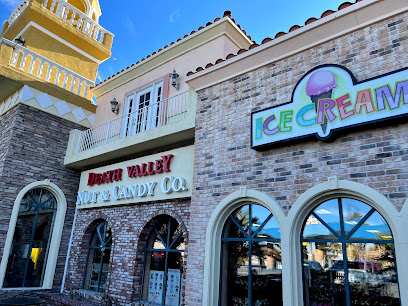
Stovepipe Wells Campground
Discover the unique landscapes and starry skies at Stovepipe Wells Campground in Death Valley National Park, an outdoor paradise for all adventurers.

Bulk Hemp Warehouse
Explore Bulk Hemp Warehouse - Your destination for sustainable hemp products and home goods, promoting eco-friendly living.

Essential bars & hidden hideouts
Stovepipe Wells Village Hotel
Discover the heart of Death Valley at Stovepipe Wells Village Hotel, where adventure meets comfort amidst stunning desert landscapes.

Crowbar Cafe & Saloon
Discover the heart of Shoshone at Crowbar Cafe & Saloon, where American flavors meet rustic charm in a welcoming atmosphere.

The Hubb
Experience the vibrant flavors and welcoming atmosphere at The Hubb, Pahrump's favorite grill and bar, where every meal is a celebration.

Wild Side Tavern(WST)
Discover the excitement of Wild Side Tavern in Pahrump, NV - a premier bar for gambling, nightlife, and unforgettable experiences.

Last Kind Words Saloon
Experience the rustic charm and hearty flavors of the Old West at Last Kind Words Saloon in Death Valley National Park, where every meal tells a story.

Toll Road Restaurant
Experience delightful dining at Toll Road Restaurant, where local flavors meet breathtaking views in Death Valley National Park.

The Hideaway Bar
Experience the vibrant atmosphere of The Hideaway Bar in Pahrump, offering a great selection of drinks and a friendly local vibe.

Who's Dunes Lounge
Discover the lively vibe of Who's Dunes Lounge, your perfect spot for drinks, socializing, and entertainment in Pahrump, NV.
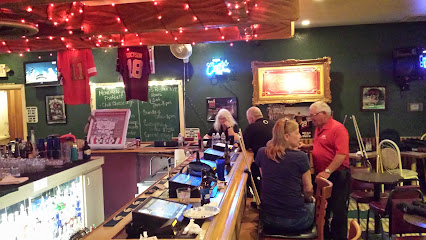
Badwater Saloon
Experience the unique charm of Badwater Saloon in Death Valley National Park, where refreshing drinks meet stunning desert landscapes.

Amargosa Café
Discover the charming Amargosa Café in Death Valley Junction, where delicious homemade meals meet the stunning desert landscape.

Tumbleweed Tavern
Discover Tumbleweed Tavern, the perfect blend of good drinks, great food, and a warm atmosphere in the heart of Pahrump, Nevada.

Death Valley Brewing
Discover the charm of Death Valley Brewing, where handcrafted beers meet serene desert landscapes in Tecopa, California.

Stateline Saloon
Experience the vibrant atmosphere and delicious offerings at Stateline Saloon in Amargosa Valley, your go-to bar and cafe in Nevada.

Panamint Springs Restaurant
Discover the charm of Panamint Springs Restaurant, where delicious food meets breathtaking desert views in the heart of California.

Stovepipe Wells Village Saloon
Discover the Stovepipe Wells Village Saloon, where refreshing drinks meet the stunning landscapes of Death Valley National Park.

Local Phrases about Death Valley National Park
-
- HelloHowdy
[haʊ-di] - GoodbyeSee ya later
[siː jə ˈleɪ.tər] - YesYup
[yʌp] - NoNah
[nɑː] - Please/You're welcomePlease and thank ya
[pliːz ænd θæŋk jə] - Thank youMuch obliged
[mʌtʃ əˈblaɪdʒd] - Excuse me/SorryPardon me
[ˈpɑrdn mi] - How are you?Howdy partner?
[haʊ-di ˈpɑːrtn̩r] - Fine. And you?I'm doin' just fine. How 'bout you?
[aɪm ˈdɔɪn dʒʌst faɪn haʊ ˈbaʊt jʊ] - Do you speak English?Y'all speak English?
[jɔːl spiːk ˈɪŋɡlɪʃ] - I don't understandI reckon I'm lost
[aɪ ˈrɛkən aɪm lɒst]
- HelloHowdy
-
- I'd like to see the menu, pleaseCould I take a gander at the menu?
[kʊd aɪ teɪk ə ˈɡændər æt ðə ˈmɛnjuː] - I don't eat meatI ain't no meat eater
[aɪ eɪnt nəʊ miːt ˈiːtər] - Cheers!Bottoms up!
[ˈbɒtəmz ʌp] - I would like to pay, pleaseI reckon it's time to settle the bill
[aɪ ˈrɛkən ɪts taɪm tuː ˈsɛtəl ðə bɪl]
- I'd like to see the menu, pleaseCould I take a gander at the menu?
-
- Help!I need a hand!
[aɪ niːd ə hænd] - Go away!Skedaddle!
[skɪˈdædəl] - Call the Police!Round up the Sheriff!
[raʊnd ʌp ðə ˈʃɛrɪf] - Call a doctor!Send for the Doc!
[sɛnd fɔːr ðə dɒk] - I'm lostI'm turned around
[aɪm tɜːnd əˈraʊnd] - I'm illI'm feelin' poorly
[aɪm ˈfiːlɪn ˈpʊrli]
- Help!I need a hand!
-
- I'd like to buy...I'm fixin' to purchase...
[aɪm ˈfɪksɪn tuː ˈpɜːrtʃəs] - I'm just lookingI'm just browsin'
[aɪm dʒʌst ˈbraʊzɪn] - How much is it?What's the damage?
[wɒts ðə ˈdæmɪdʒ] - That's too expensiveThat's a mite pricey
[ðæts ə maɪt ˈpraɪsi] - Can you lower the price?Kin ya wiggle on the cost?
[kɪn jə ˈwɪɡəl ɒn ðə kɒst]
- I'd like to buy...I'm fixin' to purchase...
-
- What time is it?What's the hour?
[wɒts ðə ˈaʊər] - It's one o'clockIt's high noon
[ɪts haɪ nuːn] - Half past (10)Half past (10)
[hɑːf pæst (10)] - MorningMornin'
[ˈmɔːrnɪn] - AfternoonAfternoon
[ˌæftəˈnuːn] - EveningEvenin'
[ˈiːvənɪn] - YesterdayYest'day
[ˈjɛstˌdeɪ] - TodayToday
[təˈdeɪ] - TomorrowTomorrow
[təˈmɒrəʊ] - 1One
[wʌn] - 2Two
[tuː] - 3Three
[θriː] - 4Four
[fɔːr] - 5Five
[faɪv] - 6Six
[sɪks] - 7Seven
[ˈsɛvən] - 8Eight
[eɪt] - 9Nine
[naɪn] - 10Ten
[tɛn]
- What time is it?What's the hour?
-
- Where's a/the...?Where's that...?
[wɛəz ðæt] - What's the address?What's the street?
[wɒts ðə striːt] - Can you show me (on the map)?Kin ya point it out (on the map)?
[kɪn jə pɔɪnt ɪt aʊt ɒn ðə mæp] - When's the next (bus)?When's the next ride?
[wɛnz ðə nɛkst raɪd] - A ticket (to ....)A pass (to ....)
[ə pæs tuː]
- Where's a/the...?Where's that...?
History of Death Valley National Park
-
Long before European settlers arrived, the Timbisha Shoshone people inhabited the region now known as Death Valley. They adapted to the harsh desert environment with remarkable ingenuity, utilizing the sparse resources to sustain their communities. Their presence in the valley dates back over a thousand years, and they left behind petroglyphs, pottery, and other artifacts that provide insight into their way of life.
-
During the California Gold Rush of 1849, a group of pioneers known as the Jayhawkers and the Bennett-Arcane Party attempted to cross Death Valley in search of a shortcut to the gold fields. The treacherous journey led to severe hardship and fatalities, with the survivors famously dubbing the area 'Death Valley.' This event marked the valley's entry into American historical consciousness and highlighted the extreme conditions of the desert.
-
In the late 19th century, Death Valley became the center of a lucrative borax mining industry. The discovery of borax deposits led to the establishment of several mining operations, and the famous 20-mule teams were used to transport the mineral to market. This period saw the development of infrastructure such as the Harmony Borax Works, remnants of which can still be visited today, showcasing the industrial heritage of the area.
-
In the 1920s and 1930s, a colorful character named Walter Scott, also known as 'Death Valley Scotty,' claimed to have found a secret gold mine in the valley. With funds from Chicago millionaire Albert Mussey Johnson, Scotty built a lavish mansion known as Scotty's Castle. Though no gold was ever found, the castle remains a fascinating historical site, offering a glimpse into the opulent lifestyle and the intriguing stories of its inhabitants.
-
On February 11, 1933, President Herbert Hoover declared Death Valley a National Monument, protecting its unique geological formations and diverse ecosystems. This designation helped to preserve the area's natural beauty and historical significance, paving the way for future conservation efforts and public enjoyment.
-
During World War II, parts of Death Valley were used as training grounds for military troops. The harsh desert conditions provided an ideal environment for preparing soldiers for the North African campaign. This period added a new layer of historical significance to the valley, as it played a small but important role in the broader context of the war.
-
Death Valley was redesignated as a National Park on October 31, 1994, through the Desert Protection Act. This change expanded the protected area to include additional lands and reinforced the commitment to preserving its unique landscapes and cultural heritage. Today, Death Valley National Park is a popular destination for tourists and researchers alike, drawn by its stunning vistas, historical sites, and rich biodiversity.
Death Valley National Park Essentials
-
Death Valley National Park is located in eastern California, near the Nevada border. The nearest major airports are McCarran International Airport in Las Vegas, Nevada, approximately 120 miles away, and Los Angeles International Airport, approximately 270 miles away. From Las Vegas, you can rent a car and drive to the park, which typically takes about 2 hours. Alternatively, you can take a bus or join a guided tour that departs from Las Vegas or Los Angeles.
-
Once you arrive, having a car is essential for exploring Death Valley National Park due to its vast and remote nature. The park's roads are generally well-maintained, but some areas may require a 4WD vehicle. Gas stations are scarce within the park, so make sure to fill up your tank before entering. There is no public transportation within the park, but guided tours are available for those who prefer not to drive.
-
The official currency in the United States is the US Dollar (USD). Credit and debit cards are widely accepted in the park's visitor centers, campgrounds, and other facilities. However, it is advisable to carry some cash, especially for smaller purchases or in case of temporary card machine outages. ATMs are available at Furnace Creek, but it's a good idea to bring enough cash with you.
-
Death Valley is generally a safe destination, but its extreme environment requires special precautions. Always carry plenty of water, as dehydration can occur quickly. Avoid hiking during the hottest parts of the day (midday to late afternoon) and let someone know your plans before venturing out. While crime is rare, it's always wise to lock your vehicle and secure your belongings. There are no specific high-crime areas targeting tourists.
-
In case of emergency, dial 911 for immediate assistance. There are visitor centers with park rangers who can provide help and information. The main visitor center at Furnace Creek has basic medical facilities. For more serious medical emergencies, the nearest hospital is in Pahrump, Nevada, about 60 miles away. Always carry a basic first-aid kit and ensure your vehicle is in good working condition.
-
Fashion: Do wear loose, light-colored clothing and a wide-brimmed hat to protect yourself from the sun. Don't wear heavy or dark clothing, as it can increase the risk of heatstroke. Religion: Respect the natural environment and any cultural heritage sites within the park. Public Transport: There is no public transport within the park, so plan accordingly. Greetings: Greetings are casual; a simple 'hello' is sufficient. Eating & Drinking: Always carry sufficient water and snacks. Do not leave any food or trash behind, as it can harm wildlife.
-
To experience Death Valley like a local, visit during the cooler months (November to March) when temperatures are more manageable. Start your day early to catch the stunning sunrise at Zabriskie Point. Explore lesser-known spots like the Mesquite Flat Sand Dunes and Darwin Falls for a quieter experience. Don't miss the night sky; Death Valley is a designated Dark Sky Park, offering incredible stargazing opportunities.
Trending Landmarks in Death Valley National Park
-
Furnace Creek Visitor Center
-
Dante’s View
-
Mesquite Flat Sand Dunes
-
The Ranch at Death Valley
-
Harmony Borax Works
-
Stovepipe Wells Village Hotel
-
Amargosa Opera House
-
Golden Canyon Trailhead
-
Stovepipe Wells General Store
-
Ubehebe Crater
-
Death Valley National Park Information Area
-
Natural Bridge Trail
-
Last Kind Words Saloon
-
Wildrose Charcoal Kilns
-
Death Valley National Park Sign
Nearby Cities to Death Valley National Park
-
Things To Do in North Las Vegas
-
Things To Do in Henderson
-
Things To Do in Boulder City
-
Things To Do in Bakersfield
-
Things To Do in Fresno
-
Things To Do in Yosemite Village
-
Things To Do in Santa Clarita
-
Things To Do in Laughlin
-
Things To Do in Mesquite
-
Things To Do in Joshua Tree
-
Things To Do in Pasadena
-
Things To Do in Burbank
-
Things To Do in Glendale
-
Things To Do in Monterey Park
-
Things To Do in Hollywood













